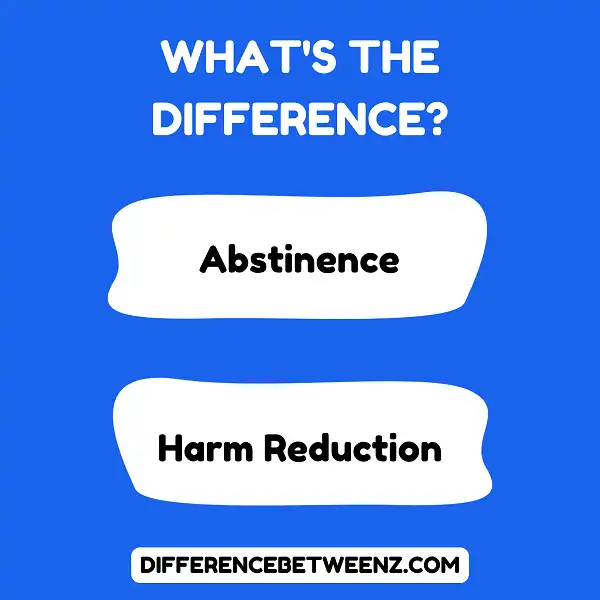When it comes to making healthier lifestyle choices and being more mindful of our decisions, many people want to take steps that will help protect their health in the long run. But how do you know which path to choose? Abstinence and harm reduction are two approaches that can both be used to improve your well-being and minimize potential risk, but knowing the difference between them is critical for successfully reaching your desired outcomes. In this blog post, we’ll dive deep into understanding abstinence vs harm reduction—their different principles, practices, and advantages – so that you can make an informed choice about what strategy would be best for you.
What is Abstinence?
- Abstinence can be an incredibly effective tool for people dealing with issues such as drug or alcohol addiction. Abstinence refers to refraining from addictive behaviors or substances with the goal of regaining control of the harmful habit and restoring physical and emotional balance.
- Abstinence is a key part of recovery since abstinence enables individuals to identify their triggers more clearly so that they can create healthier coping strategies in order to avoid relapse.
- Abstinence also allows the person to practice self-care, reduce stress levels, and develop healthier habits during recovery. Abstinence requires dedication and willpower, but when successfully practiced it can positively impact the road to lasting recovery.
What is Harm Reduction?
Harm Reduction is a form of public health policy whose aim is to reduce the negative consequences of substances such as drugs and alcohol without necessarily requiring individuals to completely stop consuming them. Harm Reduction recognizes that it is impossible to completely wipe out the use of such substances, and instead focuses on minimizing their potential risks and damages.
This type of approach typically involves providing users with resources like sterile syringes in order to help decrease the likelihood of contracting diseases such as HIV/AIDS; teaching drug users about safe practices regarding injecting, and over-the-counter medications, and driving under the influence; supplying rehabilitative services; creating action plans; and most importantly advocating dignity for every person regardless of where they have come from or why they may be consuming substances in dangerous ways.
Difference Between Abstinence and Harm Reduction
Abstinence and Harm Reduction are two approaches to dealing with issues such as drug or alcohol addiction.
- Abstinence focuses on total avoidance of the problem; complete abstinence from any activities or substances related to the behavior in question is the aim.
- Harm reduction, on the other hand, acknowledges that for some people, complete abstinence is either unachievable or not desirable, and focuses on reducing harm through moderate behavior and lifestyle management rather than complete avoidance.
- Abstinence allows people to make a fresh start while Harm Reduction encourages risk-reduction activities tailored to an individual’s needs. Abstinence can help individuals break free of unhealthy habits whereas Harm Reduction teaches healthier coping skills.
Together, Abstinence and Harm Reduction creates a strong foundation for healing from addiction.
Conclusion
Abstinence and harm reduction are both evidence-based approaches to substance use disorders. Abstinence is the goal of treatment and sobriety is the primary measure of success. Harm reduction, on the other hand, seeks to reduce the negative consequences of drug use without requiring abstinence. While both approaches have their merits, abstinence-based programs have been shown to be more effective in treating substance use disorders. If you or a loved one are struggling with addiction, an abstinence-based program may be the best option for you.


